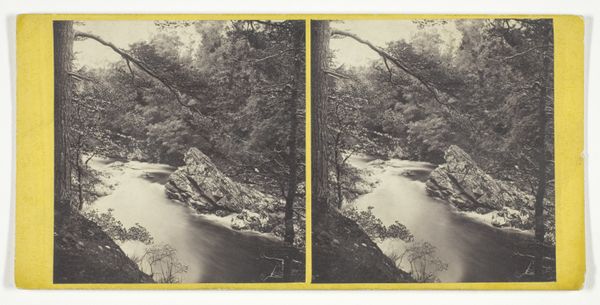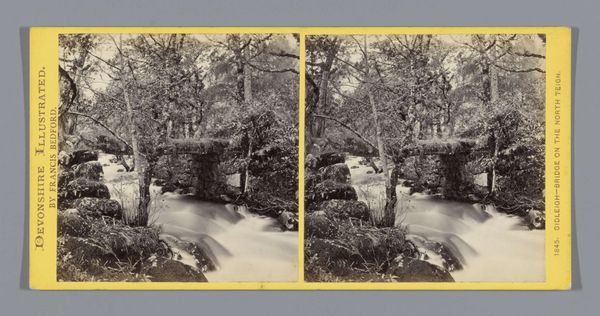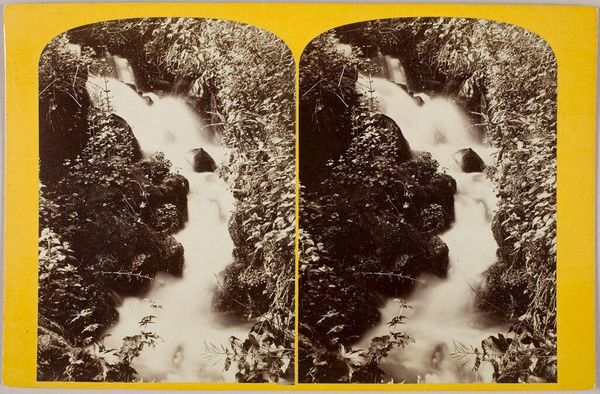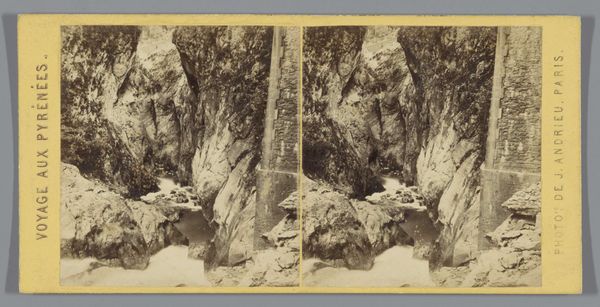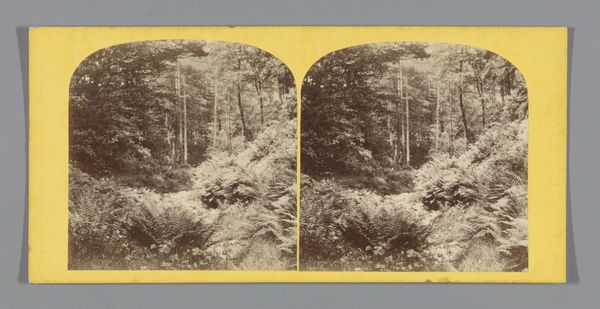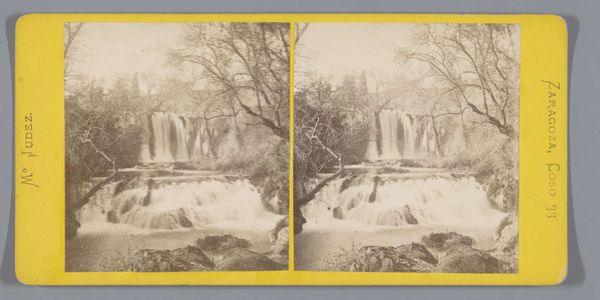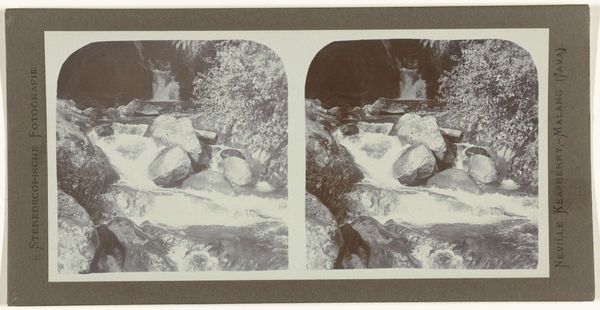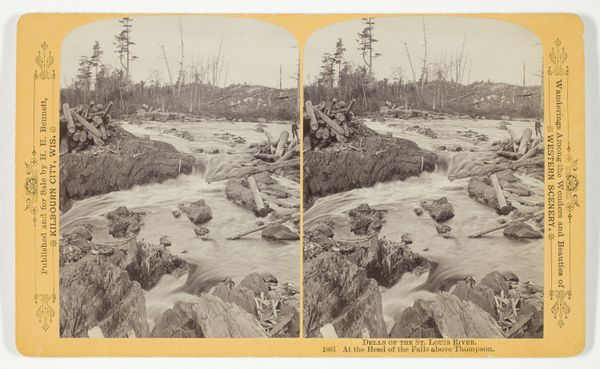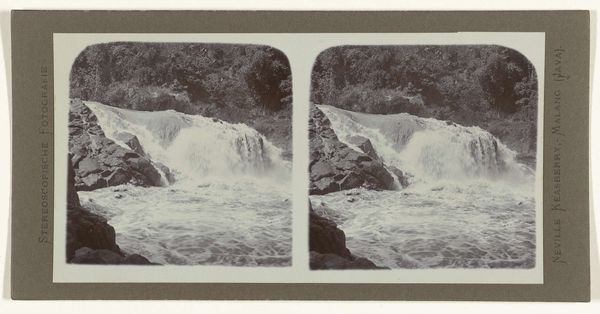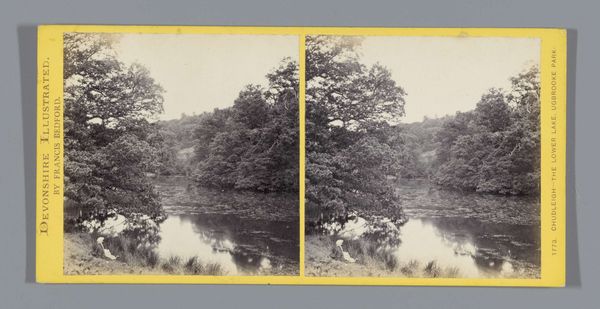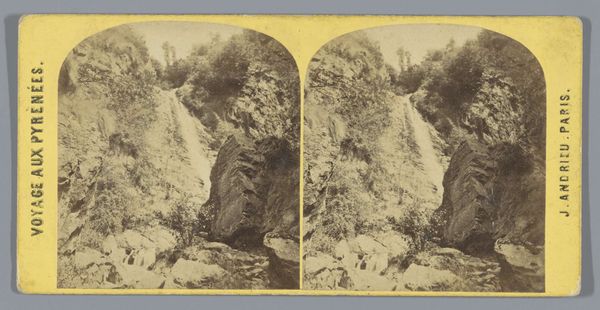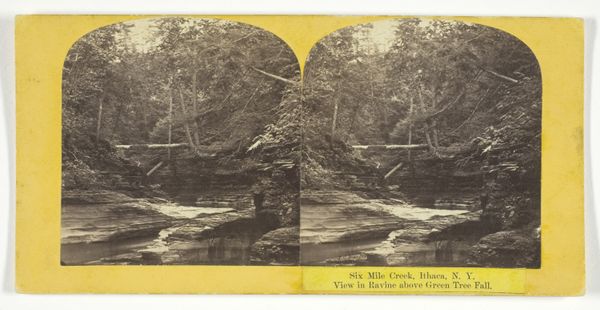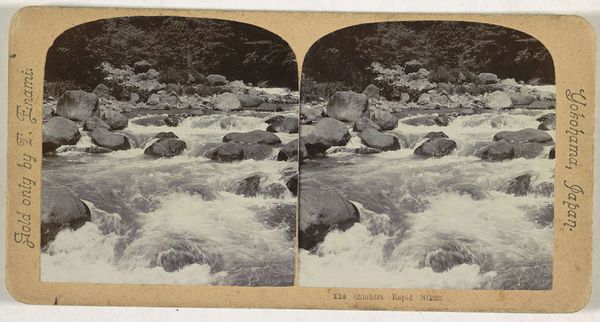
Dimensions: height 85 mm, width 170 mm
Copyright: Rijks Museum: Open Domain
This stereo card, likely made by Francis Bedford, shows Stroomversnellingen bij Watersmeet House. Photography in the 19th century was a fascinating blend of art and science. The process began with coating a glass plate with a light-sensitive emulsion, a delicate and highly skilled task. After exposure in the camera, the plate was developed, revealing a negative image. The photographer would then print the image onto paper, fixing it to prevent further light sensitivity. Stereo cards like this one required two nearly identical images, creating a three-dimensional effect when viewed through a special device. The material qualities of this photograph – its sepia tones and the texture of the paper – speak to the labor and care involved in its creation. Beyond its aesthetic appeal, this image reflects the rise of tourism and leisure in the Victorian era. Photography played a key role in documenting and popularizing scenic destinations, making them accessible to a wider audience through mass-produced images. Understanding the materials, making, and context is key to understanding the photograph.
Comments
No comments
Be the first to comment and join the conversation on the ultimate creative platform.
